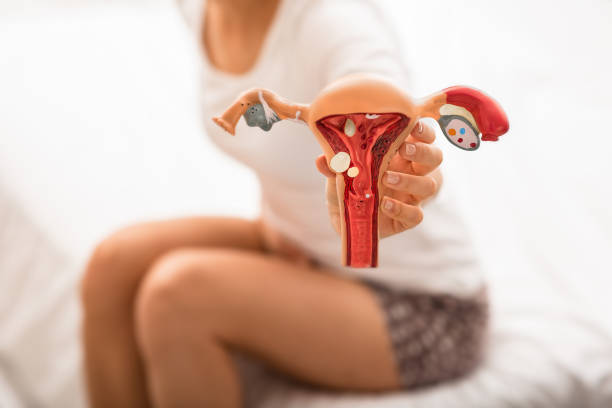Make an Appointment
Endometriosis is a disorder in which tissue similar to the lining of your uterus grows outside of your uterine cavity. The lining of your uterus is called the endometrium. How is it caused? How is endometriosis detected? Endometriosis is a condition that occurs when endometrial like tissue grows on your ovaries, bowel, and tissues lining your pelvis? It is uncommon for endometrial like tissue to spread beyond your pelvic region, but it is not impossible.
Endometrial-like tissue growing outside of your uterus is known as an endometrial implant.
The hormonal changes of your menstrual cycle affect the misplaced endometrial-like tissue, causing the area to become inflamed and painful. This means the tissue will grow, thicken, and break down. Over time, the tissue that has broken down has nowhere to go and becomes trapped in your pelvis. This tissue that is trapped in your pelvis can cause irritation, scar formation, adhesions in which tissue binds your pelvic organs together, severe pain during the menstrual cycle and fertility problems.
How is endometriosis detected? There are many ways in which it can be detected.
- The first involves examining the pelvis – During a pelvic exam; your doctor carefully inspects the outer portion of your genitals (vulva), and then inserts two fingers of one hand into your vagina and simultaneously presses the other hand on your abdomen to feel your uterus and ovaries. He or she also inserts a device called a speculum into your vagina. The speculum opens your vagina so that your doctor can view your vagina and cervix for abnormalities.
- The second involves the use of sound waves – To create a picture of your uterus sound waves are used. Your doctor may recommend a transvaginal ultrasound to look at the thickness and texture of the endometrium and help rule out other conditions. In this procedure, a wand-like device (transducer) is inserted into your vagina. The transducer uses sound waves to create a video image of your uterus. This test helps your doctor look for abnormalities in your uterine lining.
- Use a scope to examine your endometrium – During a hysteroscopy, your doctor inserts a thin, flexible, lighted tube (hysteroscopy) through your vagina and cervix into your uterus. A lens on the hysteroscopy allows your doctor to examine the inside of your uterus and the endometrium.
- Removing a sample of tissue for testing – To get a sample of cells from inside your uterus, you’ll likely undergo an endometrial biopsy. This involves removing tissue from your uterine lining for laboratory analysis. An endometrial biopsy may be done in your doctor’s office and usually doesn’t require anaesthesia.
- Performing surgery to remove tissue for testing – If enough tissue can’t be obtained during a biopsy or if the biopsy results are unclear, you’ll likely need to undergo a procedure called dilation and curettage (D&C). During D&C, tissue is scraped from the lining of your uterus and examined under a microscope for cancer cells.
If endometrial cancer is found, you’ll likely be referred to a doctor who specializes in treating cancers involving the female reproductive system or a gynaecologic oncologist. Treatment for endometrial cancer is usually with surgery to remove the uterus, fallopian tubes and ovaries. Another option is radiation therapy with powerful energy. Drug treatments for endometrial cancer include chemotherapy with powerful drugs and hormone therapy to block hormones that cancer cells rely on. Other options might be targeted therapy with drugs that attack specific weaknesses in the cancer cells and immunotherapy to help your immune system fight cancer.


One Comment
Pingback: How is endometriosis detected? – Sujata Birla Hospital